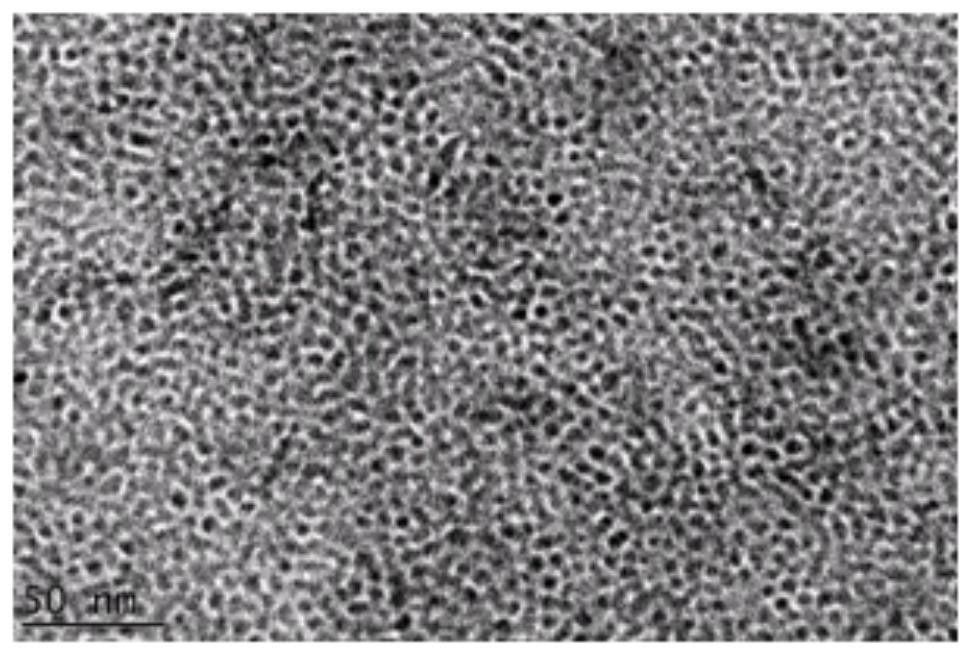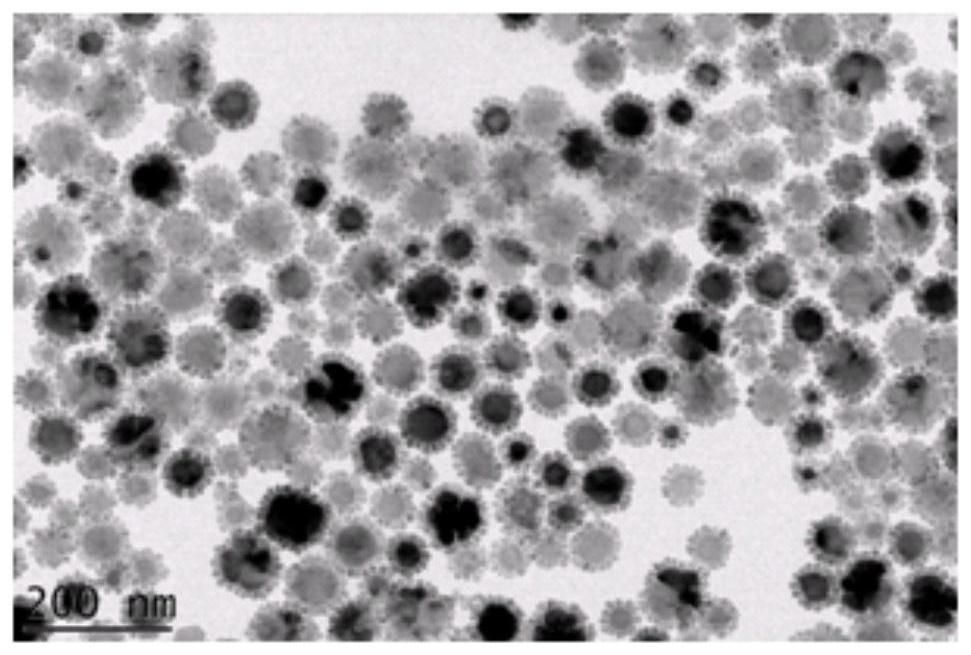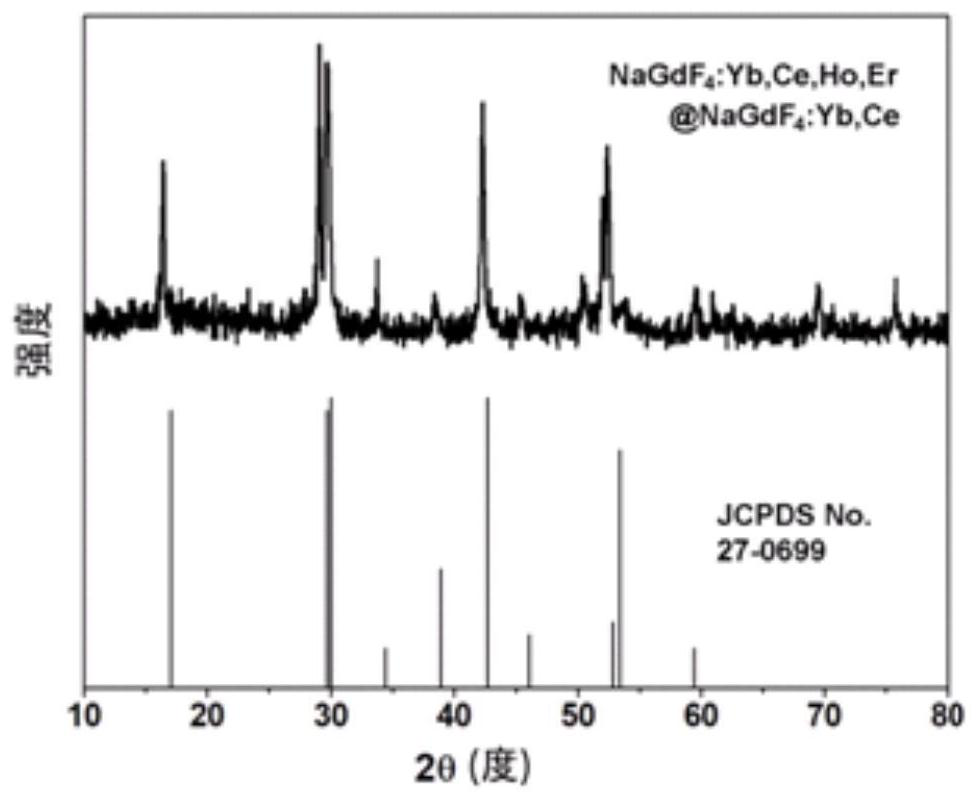Up-conversion/down-conversion dual-mode light-emitting nanocrystalline and preparation method and application of up-conversion/down-conversion dual-mode light-emitting nanocrystalline
A nanocrystalline, dual-mode technology, applied in nanotechnology, nanotechnology, nano-optics, etc., to achieve high product purity, uniform particle size distribution, and good dispersion
- Summary
- Abstract
- Description
- Claims
- Application Information
AI Technical Summary
Problems solved by technology
Method used
Image
Examples
Embodiment 1
[0037] (1) Synthesize gadolinium chloride, ytterbium chloride, cerium chloride, holmium chloride, and erbium chloride respectively: at room temperature, mix 20 mmol of the corresponding metal oxide and 60 mmol of concentrated hydrochloric acid in a container, and heat the mixed solution at a constant temperature Slowly heat to 80°C under magnetic stirring on a magnetic stirrer, add 10mL of distilled water and continue to react for 0.5h, cool the obtained solution and filter to obtain a clear and transparent solution, continue to heat at 80°C until chloride crystals are precipitated on the surface of the solution, transfer to Oven drying at 60°C, the obtained solid powder is the chloride of the corresponding metal element;
[0038] (2) Synthesize gadolinium oleate, ytterbium oleate and cerium oleate respectively: Take 20mmol of the corresponding metal chloride, 60mmol of sodium oleate, 30mL of distilled water, 40mL of ethanol and 70mL of n-hexane into the container, and heat the...
Embodiment 2
[0042] (1) Synthesize gadolinium chloride, ytterbium chloride, cerium chloride, holmium chloride, and erbium chloride respectively: at room temperature, mix 30 mmol of the corresponding metal oxide and 180 mmol of concentrated hydrochloric acid in a container, and heat the mixed solution at a constant temperature Slowly heat to 90°C under magnetic stirring on a magnetic stirrer, add 30mL of distilled water and continue to react for 1h, cool the obtained solution and filter to obtain a clear and transparent solution, continue to heat at 90°C until chloride crystals are precipitated on the surface of the solution, transfer to 70 ℃ oven drying, the obtained solid powder is the chloride of the corresponding metal element;
[0043] (2) Synthesize gadolinium oleate, ytterbium oleate and cerium oleate respectively: Take 30mmol of the corresponding metal chloride, 90mmol of sodium oleate, 50mL of distilled water, 60mL of ethanol and 90mL of n-hexane into the container, and heat the mix...
Embodiment 3
[0047] (1) Synthesize gadolinium chloride, ytterbium chloride, cerium chloride, holmium chloride, and erbium chloride respectively: at room temperature, mix 10 mmol of the corresponding metal oxide and 90 mmol of concentrated hydrochloric acid in a container, and heat the mixed solution at a constant temperature Slowly heat to 85°C under magnetic stirring on a magnetic stirrer, add 20mL of distilled water and continue to react for 0.8h, cool the obtained solution and filter to obtain a clear and transparent solution, continue to heat at 85°C until chloride crystals are precipitated on the surface of the solution, transfer to Oven drying at 65°C, the obtained solid powder is the chloride of the corresponding metal element;
[0048] (2) Synthesize gadolinium oleate, ytterbium oleate and cerium oleate respectively: take 10mmol of the corresponding metal chloride, 30mmol of sodium oleate, 40mL of distilled water, 70mL of ethanol and 110mL of n-hexane into the container, and heat th...
PUM
 Login to View More
Login to View More Abstract
Description
Claims
Application Information
 Login to View More
Login to View More - R&D
- Intellectual Property
- Life Sciences
- Materials
- Tech Scout
- Unparalleled Data Quality
- Higher Quality Content
- 60% Fewer Hallucinations
Browse by: Latest US Patents, China's latest patents, Technical Efficacy Thesaurus, Application Domain, Technology Topic, Popular Technical Reports.
© 2025 PatSnap. All rights reserved.Legal|Privacy policy|Modern Slavery Act Transparency Statement|Sitemap|About US| Contact US: help@patsnap.com



